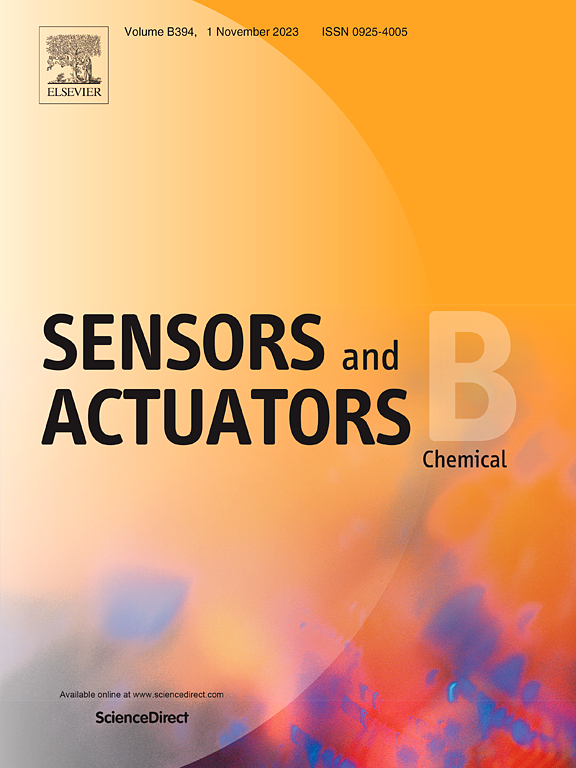利用微流控平台对具有不同迁移表型的癌细胞进行分类和表征
IF 8
1区 化学
Q1 CHEMISTRY, ANALYTICAL
引用次数: 0
摘要
癌症转移是导致患者预后不良和死亡率高的主要原因,而癌症细胞的趋化迁移与转移过程密切相关。分离具有不同迁移表型的癌症细胞对于理解癌症细胞迁移和癌症转移的机制至关重要。然而,目前基于迁移表型分选癌症细胞的方法通常效率低、操作时间长和程序复杂。此外,细胞迁移和分选实验通常依赖于活细胞成像系统,这些系统通常成本高昂且缺乏便携性。在这项研究中,我们开发了一种基于癌症细胞迁移表型分类的自动微流体平台。该平台使用两种癌症细胞系MDA-MB-231和MCF-7进行了验证,分选过程在6.5小时内完成。具有高和低迁移表型的分选细胞可以进一步培养,并具有相似的增殖能力。通过SMART-seq2分析,我们发现了几个与不同迁移表型的细胞迁移和肿瘤转移密切相关的显著差异表达基因。功能验证实验表明,MDA-MB-231细胞中GADD45B基因的敲除降低了高趋化性细胞的迁移率。富集分析表明,差异表达的基因与多种迁移相关途径有关,包括丝裂原活化蛋白激酶(MAPK)信号通路。蛋白质表达检测表明,在高趋化性细胞中磷酸化p38上调。总之,该分选平台为研究癌症细胞的迁移异质性提供了一种有效而稳健的解决方案。本文章由计算机程序翻译,如有差异,请以英文原文为准。
Sorting and characterization of cancer cells with different migration phenotypes using a microfluidic platform
Cancer metastasis is the primary cause of poor prognosis and high mortality in patients, and the chemotactic migration of cancer cells is closely related to the metastasis process. Isolating cancer cells with different migration phenotypes is crucial for understanding the mechanisms of cancer cell migration and cancer metastasis. However, current methods for sorting cancer cells based on migration phenotypes often suffer from low efficiency, long operation times, and complex procedures. Additionally, cell migration and sorting experiments often rely on live cell imaging systems, which are generally costly and lack portability. In this study, we developed an automated microfluidic platform for sorting cancer cells based on their migration phenotypes. The platform was validated using two breast cancer cell lines, MDA-MB-231 and MCF-7, with the sorting process completed within 6.5 hours. The sorted cells with high and low migration phenotypes could be further cultured and had similar proliferative capacities. Through SMART-seq2 analysis, we identified several significantly differentially expressed genes closely related to cell migration and tumor metastasis across different migration phenotypes. Functional validation experiments revealed that the knockdown of the GADD45B gene in MDA-MB-231 cells reduced the migration rate of high-chemotactic cells. Enrichment analyses revealed that the differentially expressed genes were associated with multiple migration-related pathways, including the mitogen-activated protein kinases (MAPK) signaling pathway. Protein expression assays indicated an upregulation of phosphorylated p38 in high-chemotactic cells. In conclusion, this sorting platform provides an efficient and robust solution for investigating the migration heterogeneity of cancer cells.
求助全文
通过发布文献求助,成功后即可免费获取论文全文。
去求助
来源期刊

Sensors and Actuators B: Chemical
工程技术-电化学
CiteScore
14.60
自引率
11.90%
发文量
1776
审稿时长
3.2 months
期刊介绍:
Sensors & Actuators, B: Chemical is an international journal focused on the research and development of chemical transducers. It covers chemical sensors and biosensors, chemical actuators, and analytical microsystems. The journal is interdisciplinary, aiming to publish original works showcasing substantial advancements beyond the current state of the art in these fields, with practical applicability to solving meaningful analytical problems. Review articles are accepted by invitation from an Editor of the journal.
 求助内容:
求助内容: 应助结果提醒方式:
应助结果提醒方式:


